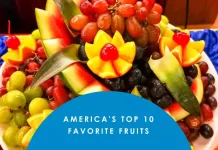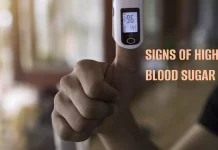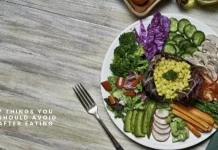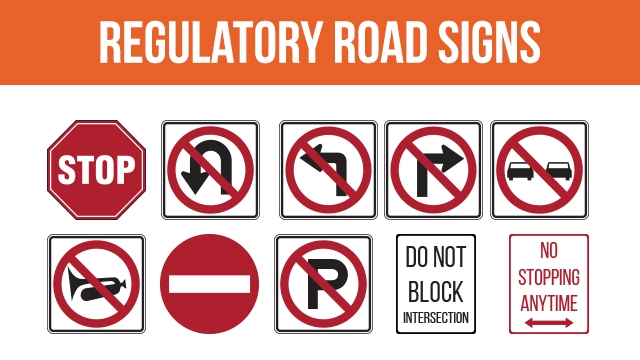
Road signs in the Philippines are regulated and standardized by the Department of Public Works and Highways. Most indications reflect minor influences from American and Australian signage but keep close to the Vienna Convention as an original signatory.
The Department of Public Works and Highways does not mandate the right of Clearview as the official typeface for signs, although some road signs do employ it.
Here Are The List of Road Traffic Signs in the Philippines
A. Regulatory Signs
Signs that inform road users of traffic laws and regulations which, if disregarded, will constitute an offense.
-
Priority Signs
STOP SIGN - the driver must stop at the designated STOP LINE. - No parking within 6 meters. 
GIVE WAY SIGN - yield to the vehicles on the right side of the intersection. 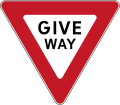
LEFT TURNER MUST GIVE WAY 
-
Direction Signs
Motorists receive clear guidance on the specific direction(s) to follow through these signs.
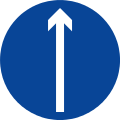 No turns
No turns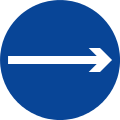 One way (right)
One way (right)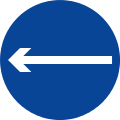 One way (left)
One way (left)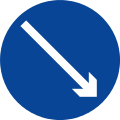 Keep right
Keep right Keep left
Keep left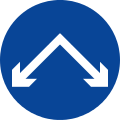 Pass either side
Pass either side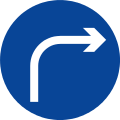 All traffic (right)
All traffic (right)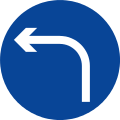 All traffic (left)
All traffic (left)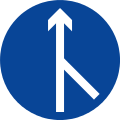 Merging traffic
Merging traffic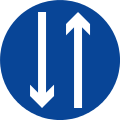 Two-way traffic
Two-way traffic No turns
No turns
(plate type) One-way
One-way
(right, plate type) One-way
One-way
(left, plate type) Keep right
Keep right
(plate type) Keep left
Keep left
(plate type) All traffic
All traffic
(right, plate type) All traffic
All traffic
(left, plate type) Merging traffic
Merging traffic
(plate type) Right lane
Right lane
must turn right Left lane must
Left lane must
turn left Salubong na Trapiko
Salubong na Trapiko
(Two-way traffic) Two-way traffic
Two-way traffic
(plate type) -
Prohibitive / Restrictive Signs
These signs enforce the specific direction(s) that motorists must follow.
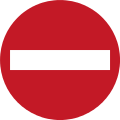 No entry for
No entry for
all vehicles No entry for
No entry for
all vehicles
(plate type) No entry for
No entry for
cars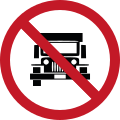 No entry for
No entry for
jeepneys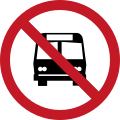 No entry
No entry
for buses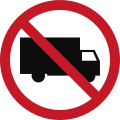 No entry
No entry
for trucks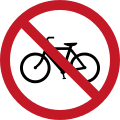 No entry
No entry
for bicycles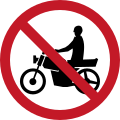 No entry
No entry
for motorcycles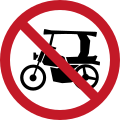 No entry
No entry
for tricycles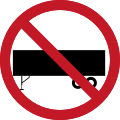 No entry
No entry
for vehicles
with trailer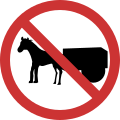 No entry
No entry
for animal
drawn vehicles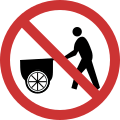 No entry
No entry
for pushcartsNo entry for all types of vehicles -
Speed Signs
Maximum speed restriction 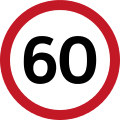
End of speed restriction 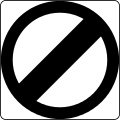

Minimum speed restriction 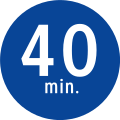
-
Parking Signs
Allowable parking and loading zone at a given time and place 















-
Miscellaneous Signs
Entering is strictly prohibited for vehicles with a gross axle load exceeding 2 tonnes. 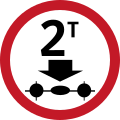
No Entry for Vehicles with gross vehicle mass of more than 5 tonnes 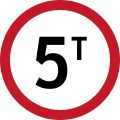
No Entry for Vehicles with more than 110 meters in length 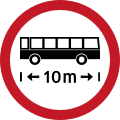
No Entry for Vehicles with more 2 meters of width 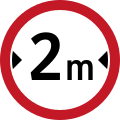
No Entry for Vehicles with 3.5 meters in height 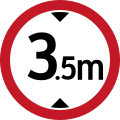
No blowing of horns 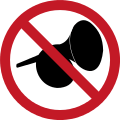
USE SEAT BELT sign is used under RA 8750, the Seat Belt Law. 
Be aware of a pedestrian crossing. 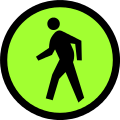
Be aware of children crossing. 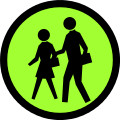
Bike lane ahead 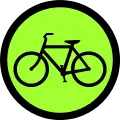
Be sensible of Persons with Disabilities crossing. 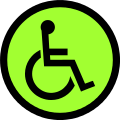
B. Warning Signs
Road signs serve the crucial purpose of alerting motorists to potentially dangerous conditions on and near the road. They provide valuable guidance by notifying drivers of hazardous road conditions, urging them to exercise caution and potentially reduce their speed. It ensures the safety not only of the drivers themselves but also of other individuals sharing the road.
-
Horizontal Signs
These signs serve the purpose of indicating the type of road curve that lies ahead for motorists.
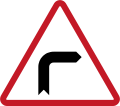 Sharp turn (right)
Sharp turn (right)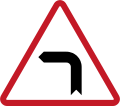 Sharp turn (left)
Sharp turn (left)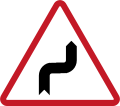 Reverse turn (right)
Reverse turn (right)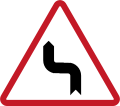 Reverse turn (left)
Reverse turn (left) Curve (right)
Curve (right)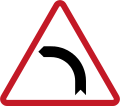 Curve (left)
Curve (left)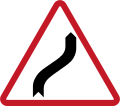 Reverse curve (right)
Reverse curve (right)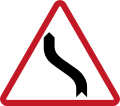 Reverse curve (left)
Reverse curve (left)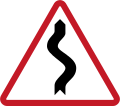 Winding road (right)
Winding road (right)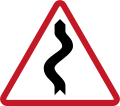 Winding road (left)
Winding road (left)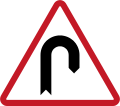 Hairpin bend (right)
Hairpin bend (right)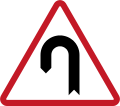 Hairpin bend (left)
Hairpin bend (left) -
Intersection Signs
Intersection or junction signs alert drivers as they approach an intersection, indicating the presence of a crossing or merging point.
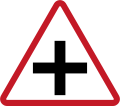
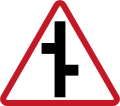
Intersection ahead 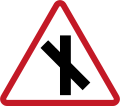
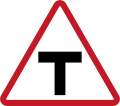 T-Junction ahead
T-Junction ahead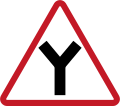 Y-Junction ahead
Y-Junction ahead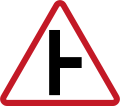 Side junction ahead
Side junction ahead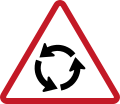 Roundabout ahead
Roundabout ahead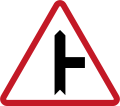 Approach to intersection side road
Approach to intersection side road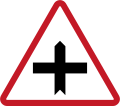 Approach to Intersection
Approach to Intersection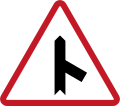 Approach to intersection
Approach to intersection
merging traffic -
Advance Warning / Traffic Control Device Signs
Intersection or junction signs are displayed to drivers as they approach an intersection or junction, providing important information about the upcoming crossing or merging point.
TRAFFIC LIGHTS AHEAD - To maintain optimal visibility for other drivers, the driver must refrain from parking or stopping within six (6) meters of this sign. 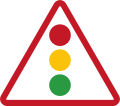
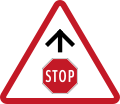 Stop Sign Ahead
Stop Sign Ahead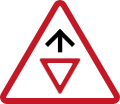 Give Way Sign Ahead
Give Way Sign Ahead -
Road Width Signs
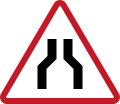

Road narrows ahead 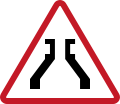

Narrow bridge ahead 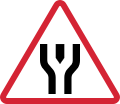 End of 2-way road ahead
End of 2-way road ahead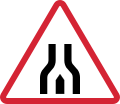 2-way road ahead
2-way road ahead -
Road Obstacle Signs
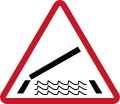 Opening bridge
Opening bridge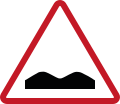 Uneven road
Uneven road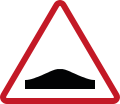 Hump
Hump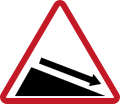 Downhill sign
Downhill sign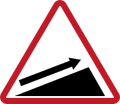 Uphill sign
Uphill sign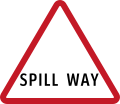 Spill way sign
Spill way sign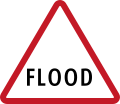 Flood-prone area
Flood-prone area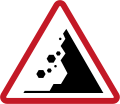 Landslide-prone area
Landslide-prone area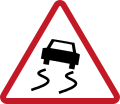 Slippery when wet
Slippery when wet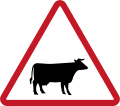 Animal crossing ahead
Animal crossing ahead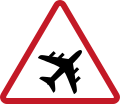 Low-flying airplane zone
Low-flying airplane zone -
Pedestrian School Signs


Pedestrian Crossing Ahead Be aware and stop for children crossing ahead 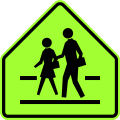
Be aware and stop for Persons with Disabilities ahead 
Advice to pedestrians to cross at designated areas 
Be aware and slow down on the bike lane ahead 
-
Railway Level Crossing Signs
Vehicles approaching a railroad crossing must come to a complete stop or yield the right of way. 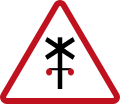

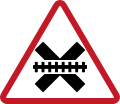
Railway crossing advance warning. An alternative railway crossing position is strategically located in an easily visible area to ensure drivers' clear visibility. 
-
Supplementary Signs
 Preferred maximum speed during usual weather and traffic conditions
Preferred maximum speed during usual weather and traffic conditions This additional sign on the road works ahead.
This additional sign on the road works ahead. WHEN WET - combined with the Slippery Road warning sign
WHEN WET - combined with the Slippery Road warning sign Distance to next hazard area
Distance to next hazard area
Traffic Signs in the Philippines
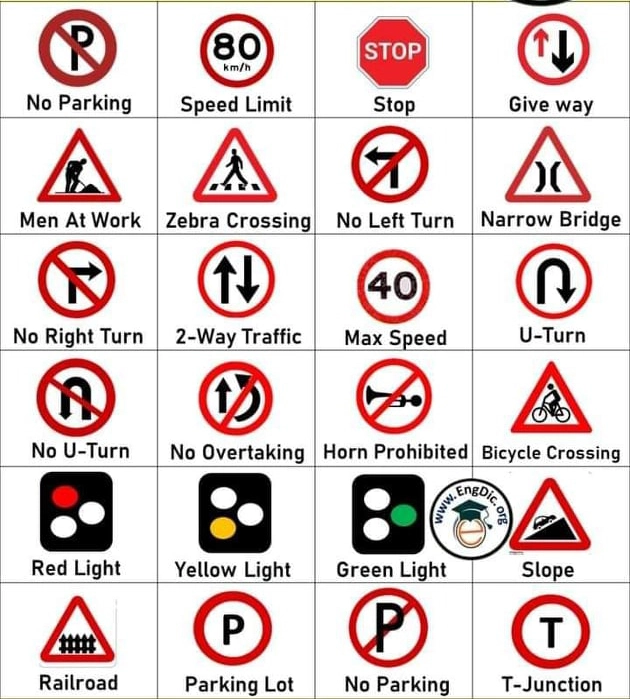
- 10 Iconic Bridges in the Philippines
- Top 10 Private Schools in Bohol
- 10 Best Food Cart Franchises Businesses in the Philippines
Important
If you want to get a driver’s license, one of the things that you should do is prepare for the LTO Driver’s Examination. The Land Transportation Office (LTO) requires everyone who wants a driver’s license to undergo medical tests, LTO written and practical tests.

